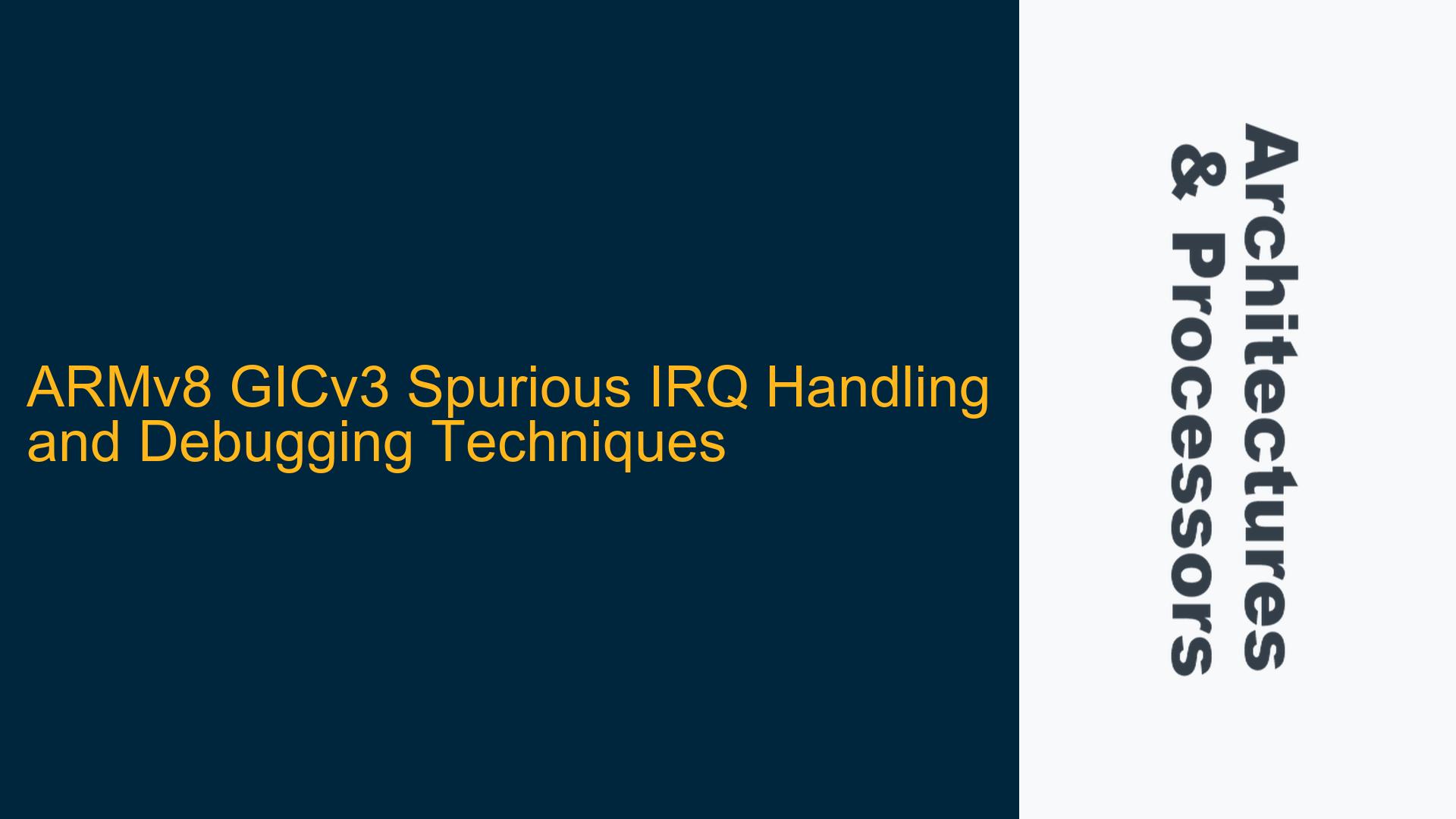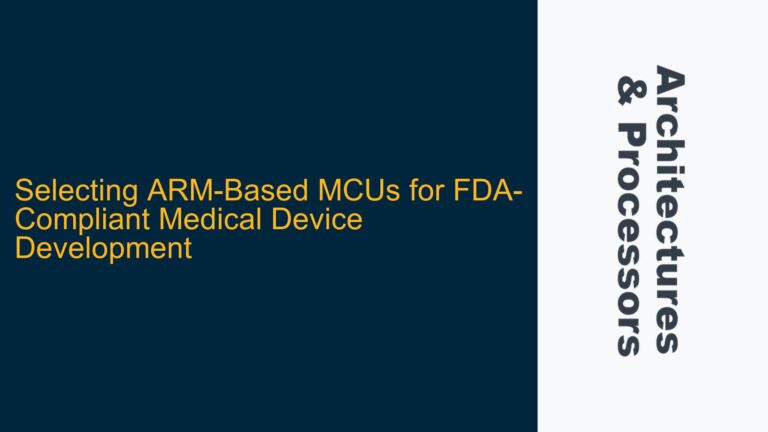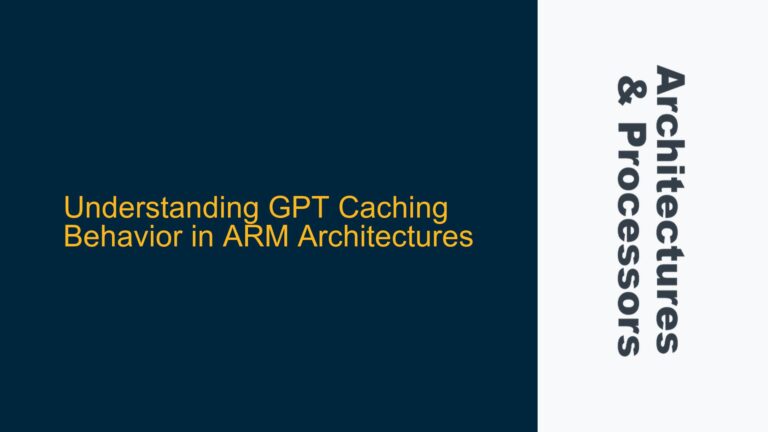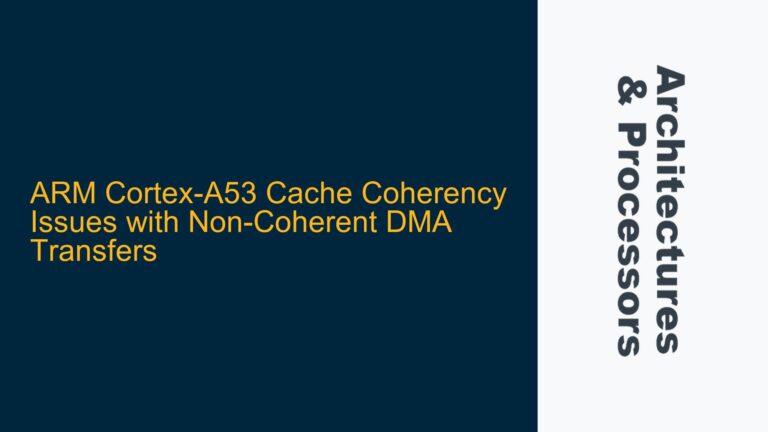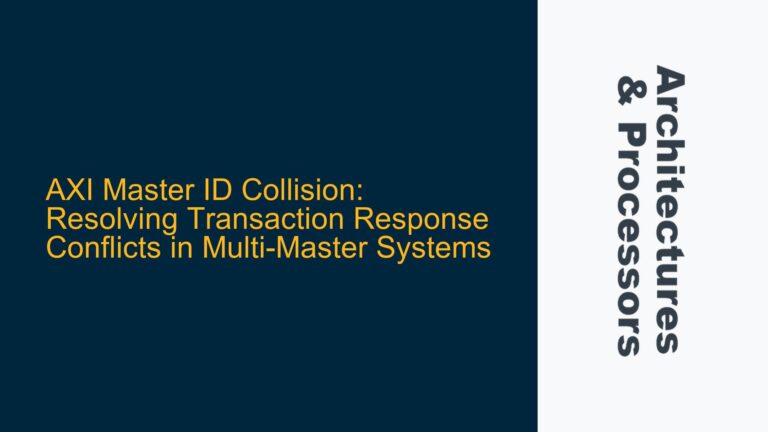ARM Cortex-A53 Spurious IRQs During Interrupt Handling with GICv3
Spurious interrupts in ARMv8 architectures, particularly when using the Generic Interrupt Controller version 3 (GICv3), can be a significant source of system instability and performance degradation. These spurious interrupts often manifest as unexpected IRQs that do not correspond to any valid interrupt source, leading to unnecessary context switches and potential race conditions. In systems utilizing ARM Cortex-A53 cores with GICv3, the issue is exacerbated by the complexity of interrupt handling across multiple security states (Secure and Non-secure) and interrupt groups (Group 0 and Group 1). This post delves into the root causes of spurious IRQs, their implications, and provides a detailed guide to debugging and resolving these issues.
Memory Barrier Omission and Interrupt State Race Conditions
One of the primary causes of spurious IRQs in ARMv8 systems is the omission of memory barriers and improper handling of interrupt state transitions. The ARM architecture relies heavily on precise timing and synchronization between the processor and the GICv3. When an interrupt is acknowledged by reading the ICC_IARx_EL1 register, the GICv3 updates its internal state to reflect that the interrupt is now active. However, if the interrupt source is deasserted or reconfigured before the processor completes the acknowledgment, the GICv3 may return a spurious interrupt ID. This race condition is particularly prevalent in systems with high interrupt rates or when handling level-sensitive interrupts.
Another contributing factor is the improper configuration of interrupt priorities and groups. In GICv3, interrupts are divided into two groups: Group 0 (typically used for Secure world interrupts) and Group 1 (typically used for Non-secure world interrupts). If a Group 0 interrupt becomes pending while the processor is in Non-secure state and attempts to acknowledge a Group 1 interrupt, the GICv3 will return a spurious interrupt ID. This scenario is further complicated by the use of Software Generated Interrupts (SGIs) and Private Peripheral Interrupts (PPIs), which can also trigger spurious IRQs if not properly managed.
The interaction between the processor’s interrupt masking (PSTATE.I/F bits) and the GICv3’s interrupt signaling mechanism can also lead to spurious IRQs. If the processor masks interrupts (PSTATE.I = 1) but the GICv3 continues to signal pending interrupts, the processor may take an IRQ exception but find no valid interrupt to acknowledge, resulting in a spurious IRQ. This is particularly problematic in systems that frequently switch between Secure and Non-secure states, as the interrupt masking behavior can vary between states.
Implementing Data Synchronization Barriers and Enhanced Interrupt State Monitoring
To effectively debug and resolve spurious IRQs in ARMv8 systems with GICv3, a combination of hardware and software techniques must be employed. The first step is to ensure proper synchronization between the processor and the GICv3 by implementing Data Synchronization Barriers (DSBs) and Instruction Synchronization Barriers (ISBs) at critical points in the interrupt handling code. These barriers prevent the processor from executing out-of-order memory accesses that could lead to race conditions with the GICv3.
The next step is to enhance the monitoring of interrupt states by reading the GICv3’s ISPEND and ISACTIVE registers before and after acknowledging an interrupt. The ISPEND register indicates which interrupts are currently pending, while the ISACTIVE register indicates which interrupts are currently active. By comparing the values of these registers before and after acknowledging an interrupt, it is possible to identify whether the interrupt was deasserted or reconfigured during the acknowledgment process. This information can be used to pinpoint the source of spurious IRQs and implement appropriate fixes.
In systems that frequently switch between Secure and Non-secure states, it is also important to monitor the ICC_HPPIRx_EL1 register, which indicates the highest priority pending interrupt. By reading this register immediately after taking an IRQ exception, it is possible to determine whether the interrupt was valid or spurious. If the ICC_HPPIRx_EL1 register indicates a valid interrupt but the ICC_IARx_EL1 register returns a spurious ID, this suggests a race condition between the interrupt signaling and acknowledgment processes.
To further isolate the source of spurious IRQs, it is recommended to implement a debug mechanism that logs the state of the GICv3 and the processor’s interrupt handling code. This can be achieved by setting the PSTATE.I/F bits and entering a Wait For Interrupt (WFI) state, then immediately reading the ISR_EL1 and ICC_HPPIRx_EL1 registers upon waking. By repeating this process and logging the results, it is possible to identify patterns in the occurrence of spurious IRQs and determine whether they are caused by specific interrupt sources or timing conditions.
Finally, it is important to review the system’s interrupt handling code to ensure that it correctly handles the deassertion and reconfiguration of interrupts. This includes properly clearing interrupt sources in peripheral registers, writing to the ICC_EOIRx register to signal the end of interrupt processing, and ensuring that interrupt priorities and groups are correctly configured. By following these steps, it is possible to significantly reduce the occurrence of spurious IRQs and improve the overall stability and performance of ARMv8 systems with GICv3.
In conclusion, spurious IRQs in ARMv8 systems with GICv3 are a complex issue that requires a thorough understanding of the architecture and careful debugging. By implementing proper synchronization mechanisms, enhancing interrupt state monitoring, and reviewing interrupt handling code, it is possible to identify and resolve the root causes of spurious IRQs, leading to a more stable and efficient system.
